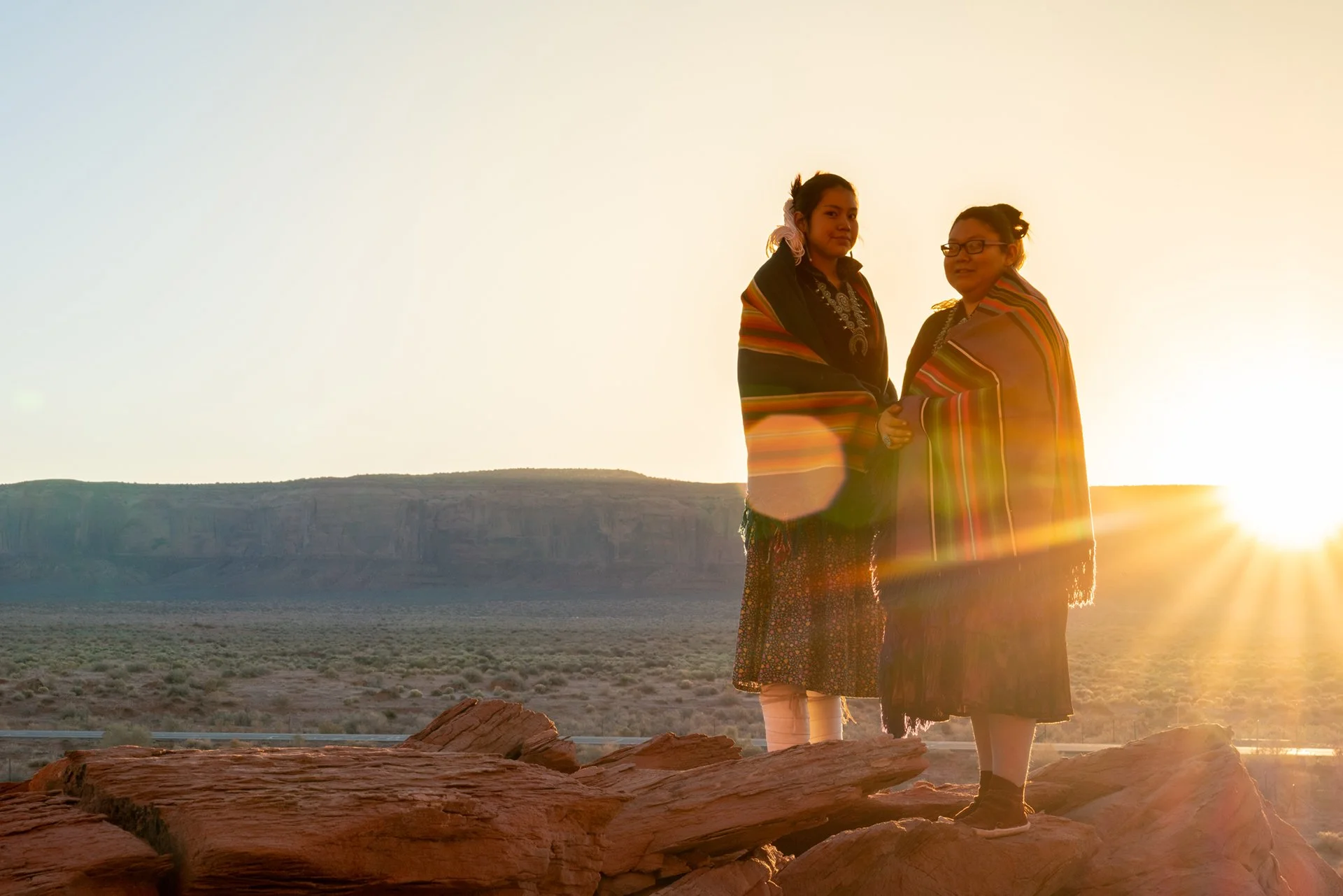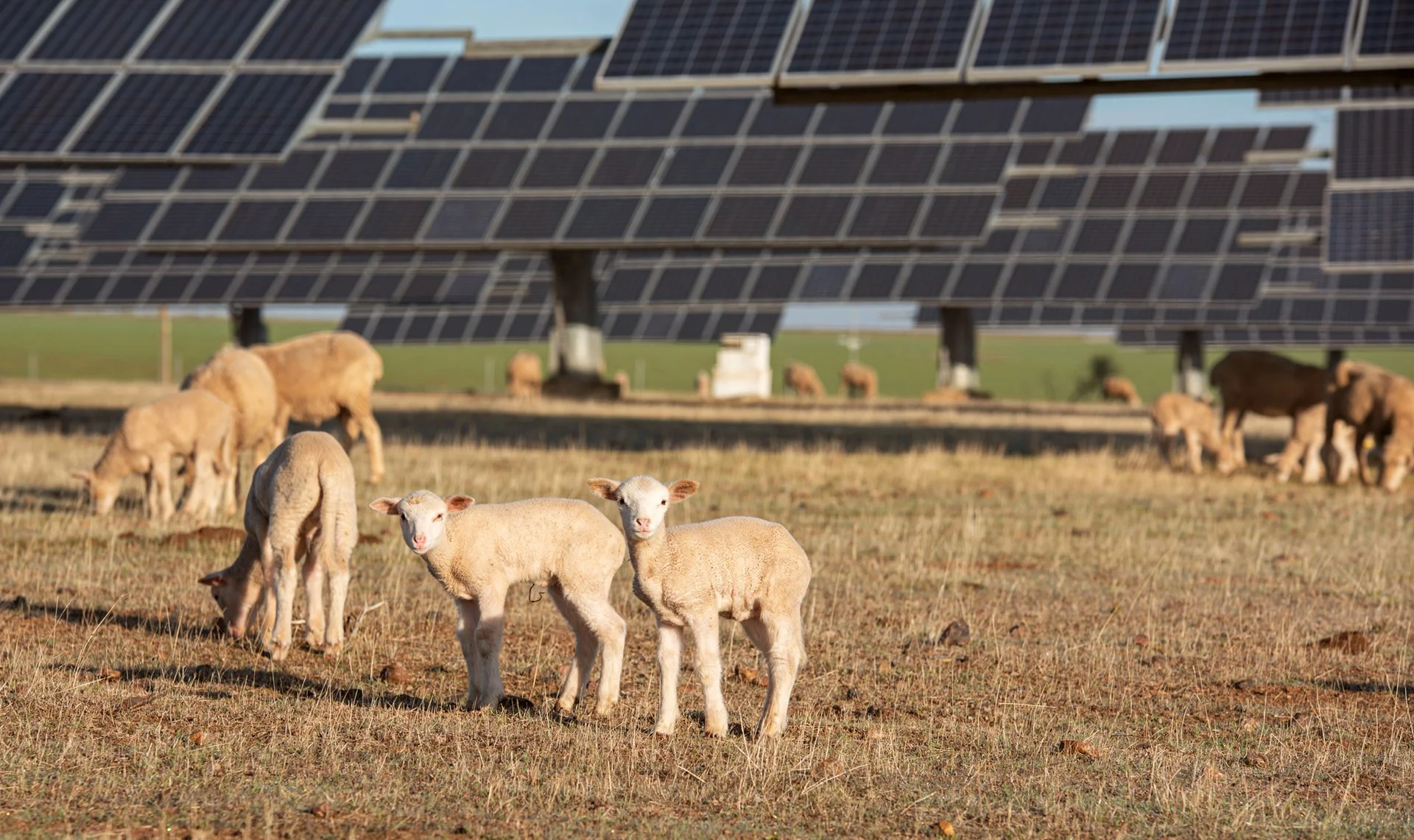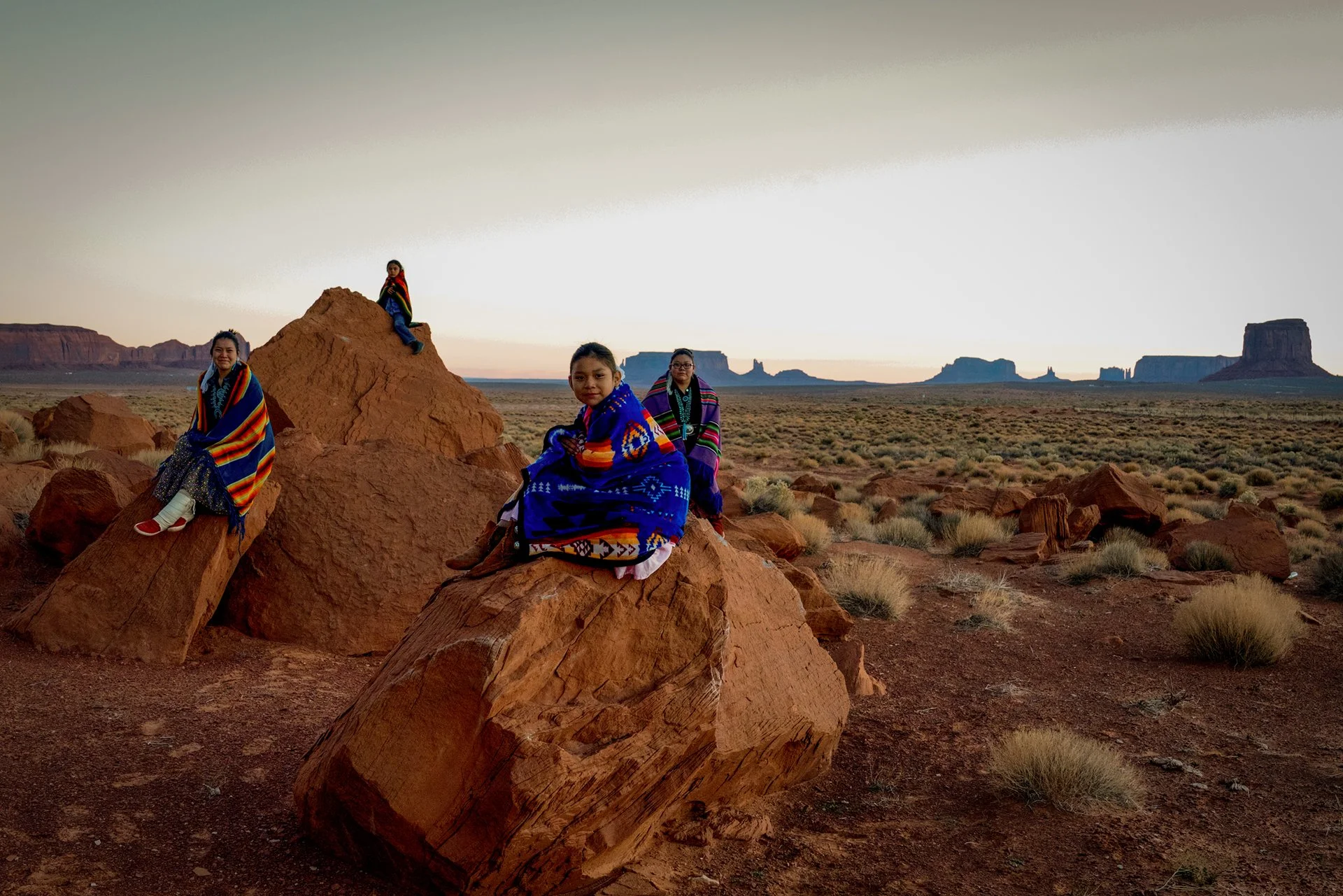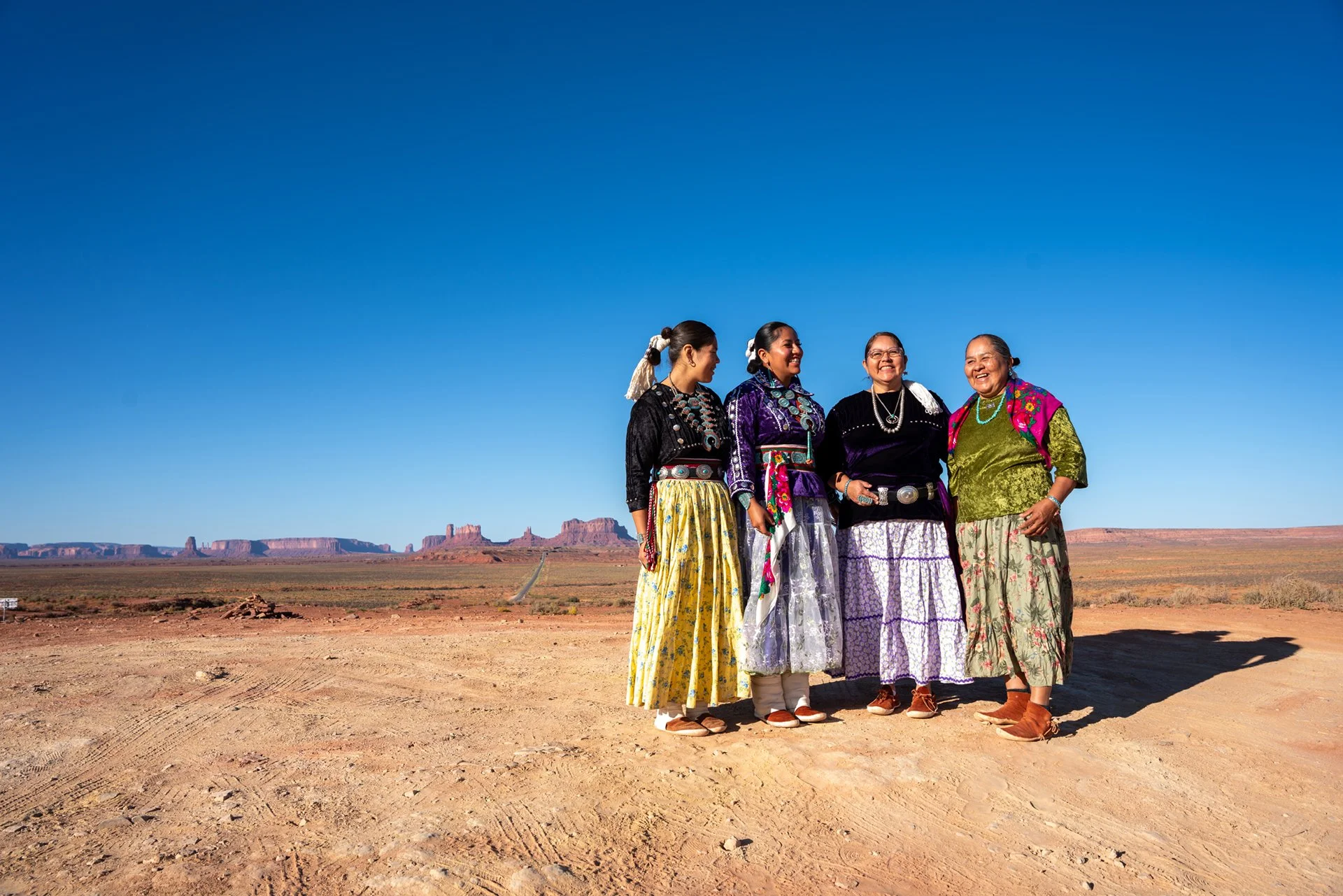
Native Resilience and Technology Development is built on a sovereignty-first model.
Powering the future of the Leupp community.
-

Jobs & Training
Hundreds of jobs during construction and many permanent jobs after. Training programs will help local people qualify for these roles.
-

Equitable Participation
With the Naat’áanii Development Corporation, the Chapter will have the opportunity to negotiate the benefits that will support community priorities.
-

Infrastructure Investment
New or improved power lines, fiber internet, roads, and water systems that also help local families.
-

Economic Development
By building reliable power solutions, Leupp can attract new types of business. These industries create good jobs and bring new opportunities for local families.
-

Benefits for Grazing and Ranching
Livestock will thrive under agrovoltaics. Panels provide shade, reduce heat stress, and conserve water, all while allowing traditional grazing to continue.
-

Respect for Culture & Focus on Sovereignty
Projects will be designed with agrovoltaics to allow farming and grazing to continue. With majority Navajo ownership through NDC, the project keeps control and benefits with the Nation.
Questions & Answers
-
This project is being led by two groups working together:
Naat’áanii Development Corporation (NDC): This is a Navajo Nation–owned company.
Native Resilience & Technology Development (NRTD): This is a private development partner that brings experience in renewable energy, technology, and project financing.
Together, NDC and NRTD form a partnership that is majority Navajo-owned, so control and benefits stay with the Navajo Nation.
-
Right now, we are only at the study stage. We are asking the Chapter to allow surveys and evaluations. This includes soil tests, environmental and cultural studies, and checking utilities
No construction can happen at this stage. The Chapter must vote again in the future before anything is built.
-
Checking wildlife, plants, water, sacred sites, and cultural areas.
Studying soils, drainage, and land conditions.
Mapping where power, water, gas, and fiber lines are located.
Sharing updates with the community and listening to feedback.
-
No. This approval is limited to feasibility work only. Any construction or development requires new, separate Chapter approval after results are shared with the community.
-
If the studies look good and the Chapter votes to continue, the project could bring many benefits:
Jobs
Training
Revenue sharing
Infrastructure upgrades
-
If the Chapter approves moving forward, there will be a Community Benefit Agreement (CBA) with the Naat’áanii Development Corporation.
-
The project is controlled by the Naat’áanii Development Corporation.
-
Agrovoltaics means using solar panels together with farming and grazing. Instead of replacing agriculture, the two work side by side.
Sheep and cattle can graze under or around the panels. The shade helps them in the heat and saves water.
Farmers can still grow grasses or forage crops on the land.
The same land produces food and energy at the same time.
It shows that development and tradition can go hand-in-hand.
For Leupp, this is important because it protects culture and grazing rights while creating new income.
-
Yes. Agrovoltaics is completely safe. There is no radiation or harmful exposure from solar panels. Panels don’t add UV; they actually absorb it! The materials in modern panels are sealed and stable—independent reviews find no cancer risk to neighbors. Solar power is a clean and safe technology that has been used all over the world for decades, including by other Tribal Nations.
-
Animals actually do better under solar panels. The shade protects them from extreme heat and reduces water needs for forage. Sheep, cattle, and other livestock can graze comfortably under the panels, and studies show they stay healthier and less stressed.
-
No. The studies in Phase One are non-invasive and will not harm the land. If development is approved later, it will be designed with care to protect soil, water, and cultural areas. Agrovoltaics in particular allows the land to continue to support grazing and farming while producing energy.
-
No. No one will be asked to give up their homes, grazing permits, or land rights for this project. All land use must go through the proper Chapter and Navajo Nation processes. The project is being designed to work with existing landowners and permit holders, not to displace them.
-
The Chapter will vote again before anything is built.
Environmental and cultural laws will be followed.
Regular community meetings and reports will keep people informed.
Grazing, farming, and traditional land uses will be respected.
Speed Matters — and It Must Come From Us
Across the world, nations and communities like ours are racing to build the next generation of technology — and it’s time for all of us to move forward together. This new wave of innovation will power everything from healthcare and education to farming and transportation. This technology depends on massive computing power — and that, in turn, depends on energy.
Right now, the Navajo Nation has something few others do: land, sunlight, open skies, and the sovereignty to decide how to use them. These are the ingredients the world needs — and if we move wisely and quickly, we can use them to build our own future rather than watch others profit from it.
A Moment We Cannot Miss
In the new global economy, speed, scarcity, and skill determine who wins.
Speed – those who can plan and build quickly will attract investment and create jobs first.
Scarcity – energy, water, and chips are limited; once sites are claimed, they are gone.
Skill – communities that can deliver real projects at scale will lead the future of technology.
And now, speed matters even more. Recent changes in the tax bill in Washington, D.C. have created short-term federal incentives that reward renewable-energy and infrastructure projects started soon. If we act quickly, these advantages can help us build more, hire locally, and keep more value within the Navajo Nation — but these benefits will not last forever.
The Navajo Nation is uniquely positioned — but only if we act together and act now.
Local Leadership and Trust
Many in Leupp and across the Nation have seen promises broken before. That history matters, and it’s why this project is led by Navajo hands, not outsiders.
Naat’áanii Development Corporation (NDC) is a federally chartered Section 17 enterprise of the Navajo Nation — our own business arm, accountable to our people.
Native Resilience and Technology Development (NRTD) is its development partner, bringing private-sector experience and technical skill, working under Navajo direction and majority control.
Together, NDC and NRTD are building a new model: projects that are owned, governed, and directed by the Navajo Nation itself, with community benefits and transparency from the start.
Building Trust and Building Home
We know trust must be earned. That’s why this project begins here in Leupp, with open communication, community input, and a clear commitment that benefits will stay close to home.
This effort isn’t just about energy and technology — it’s about building a future where our people can live, work, and raise families here. We want to be able to shop and do business in Leupp, not elsewhere. We want our kids, when they go to school off the Nation, to have something real to come back to — or they won’t come back at all.
By working together, we can make Leupp a place of opportunity — where modern development meets traditional respect for land and community.
This is our time.
If we move too slowly, others will fill the space and the opportunity will pass us by.
If we move together — with trust, skill, and urgency — we can make Leupp a model for how the Navajo Nation leads in the century ahead.
Next Steps:
Native Resilience Technology Development and the Naat’áanii Development Corporation are committed to transparency, collaboration, respect, and accountability. We will share updates openly and regularly. We will work closely with Chapter leadership and members. We will honor cultural traditions, grazing, and farming. No development will happen without Chapter consent.
-
Over the next three months, teams will carry out environmental, cultural, and engineering studies.
-
Results from these studies will be presented to the Chapter at open meetings.
-
After studies are complete, the Chapter will decide whether to move forward into development planning.
-
Community voices will shape the design and direction of the project at every step.
About Us
Follow Us






